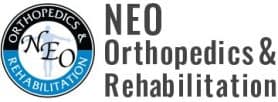Why should I try Dry Needling?
Patients come to us with a variety of complaints, including pain, stiffness, and movement dysfunctions. We work with each patient to determine the specific methods that will work together to provide the best results.
One of the many treatment modalities we offer at NEO Orthopedics and Rehab is called dry needling. At first, that may look and sound a little scary, so we wanted to talk to you more about what dry needling is, what it is not, and how we use it to ease pain and increase function.
What is dry needling?
Dry needling is a therapeutic technique used by a certified Physical Therapist that involves using a thin filiform needle that the therapist inserts into the muscle trigger point. The needle stimulates the area to decrease the nerve compression that happens because of the tightened muscle.
Dry needling is rarely performed as a standalone procedure. We use it to help make other physical therapy treatments possible and more effective.
At this point, you might be a little unnerved, so we want to reassure you that dry needling is very safe and causes minimum discomfort. What’s more, it leads to less pain because of what it does for the muscle and nearby nerves.
Dry needling is not acupuncture
Most of the time, people associate the use of needles with the practice of acupuncture, but they are drastically different despite using similar tools.
First, the training for dry needling is different from acupuncture. Only a certified physical therapist is allowed to perform dry needling. Also, acupuncture is based on eastern medicine and dry needling is rooted in western medicine. It involves an evaluation of pain patterns, and other function and orthopedic tests.
When we might use dry needling
We often use dry needling to ease pain, loosen tight muscles, improve function, and improve overall blood flow and oxygen circulation throughout the body. Some of the more common conditions we use dry needling with include treatment of pain and dysfunction in musculoskeletal conditions such as neck pain, shoulder impingement, tennis elbow, carpal tunnel syndrome, headaches, knee pain, shin splints, plantar fasciitis, or low-back pain.
Like any aspect of your treatment plan, we will discuss your options and help you understand each part of the process. We strive to make each patient’s life better and look forward to being a part of your healing process.
